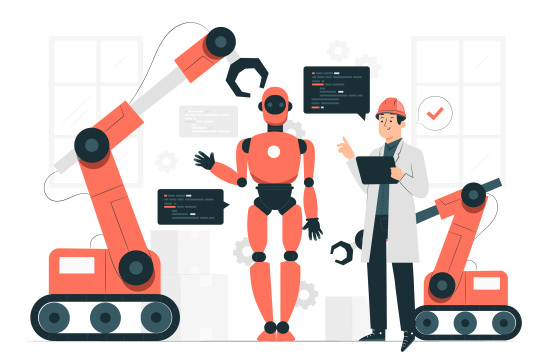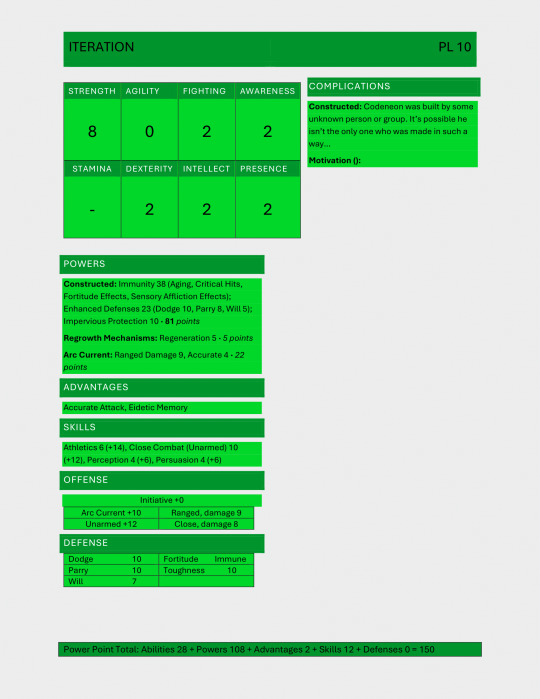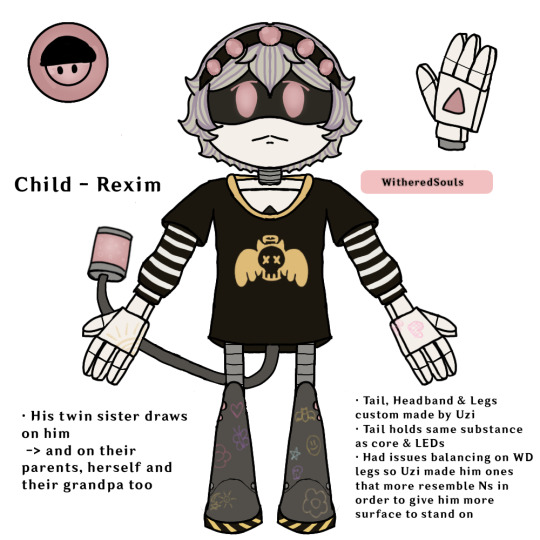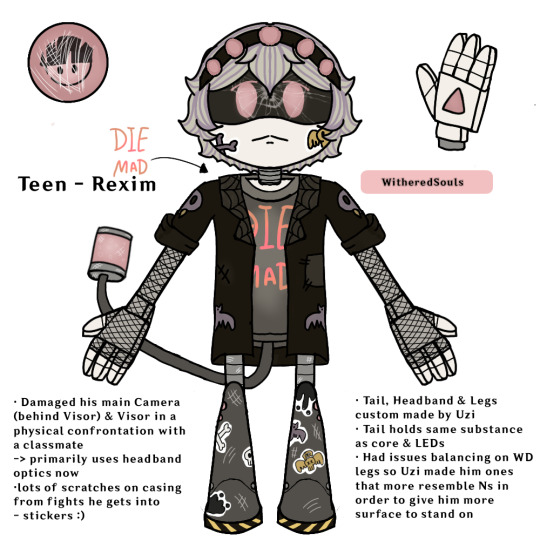#improving robot accuracy
Explore tagged Tumblr posts
Text
Optimizing Precision in Automation: The Importance of Robot Calibration by Dynalog-US
In today's fast-evolving world of industrial automation, precision is not just a luxury—it's a necessity. Whether in automotive manufacturing, aerospace engineering, electronics assembly, or robotic surgery, the accuracy and repeatability of robotic systems can make or break operations. One key process at the heart of achieving this high level of precision is robot calibration.

At Dynalog-US, we specialize in helping companies unlock the full potential of their robotic systems through advanced robot calibration solutions. With decades of experience, our technologies are trusted globally to optimize performance, reduce downtime, and ensure consistently high-quality output in automated environments.
What is Robot Calibration?
Robot calibration refers to the process of identifying and correcting inaccuracies in a robot’s positioning and movement. Even the most advanced robotic systems can have discrepancies due to mechanical wear, thermal expansion, installation errors, or slight variations in joint angles. These small deviations can add up and significantly impact the end-effector’s ability to reach precise coordinates.
Calibration involves comparing the robot's real-world behavior with its digital model and applying correction parameters to align the two. The result? Enhanced positional accuracy, improved repeatability, and optimized system performance.
Why is Robot Calibration Crucial?
Many manufacturers assume that robots are perfectly accurate straight out of the box. However, that’s rarely the case. A typical robot may have repeatability within ±0.02 mm but a positional accuracy of ±1 mm or worse. For high-precision applications—like welding seams, laser cutting, part assembly, or robotic inspection—that level of inaccuracy is unacceptable.
By investing in robot calibration, companies can:
Ensure product quality by minimizing variation
Reduce rework and scrap due to positional errors
Boost throughput by allowing robots to operate faster with confidence
Optimize programming time by simplifying offline simulation and path planning
At Dynalog-US, we understand that in the world of robotics, accuracy equals efficiency—and efficiency translates into profit.
Dynalog-US: Your Robot Calibration Partner
At Dynalog, we go beyond basic correction. We offer comprehensive calibration and measurement solutions tailored to industrial robots of all sizes and brands. Our proprietary systems and software are designed to ensure your robots perform at their highest potential—no matter the task or environment.
Our calibration tools and services include:
1. Robot TCP Calibration
Tool Center Point (TCP) calibration ensures that the robot knows exactly where the end-effector is located. An inaccurate TCP can throw off entire production sequences. Our TCP calibration tools provide fast and precise identification of the tool's position and orientation.
2. Robot Base Calibration
Base calibration aligns the robot's coordinate system with the real-world environment. Misalignment here can lead to major inaccuracies, especially in multi-robot cells. Dynalog’s solutions ensure your robots are correctly oriented within their workspace.
3. Kinematic Calibration
This is the heart of robot calibration. Dynalog uses advanced algorithms to identify deviations in joint parameters and correct them with high precision. This process compensates for the robot's geometric imperfections and leads to dramatic improvements in accuracy.
4. Robot Workcell Integration
When robots work alongside conveyors, vision systems, or other machines, precise coordination is critical. We provide calibration systems that align all components within a unified frame of reference, ensuring seamless integration and real-time performance.
Real-World Benefits of Dynalog's Robot Calibration
Companies using Dynalog’s calibration systems often see a measurable return on investment in a matter of months. Here’s what sets us apart:
Traceable Accuracy: Our solutions are based on ISO and NIST traceable standards, providing confidence in your results.
Brand Agnostic: Whether you’re using FANUC, ABB, KUKA, Yaskawa, UR, or another manufacturer—our systems are compatible across the board.
Global Trust: Trusted by Fortune 500 companies and leading research institutions, our reputation speaks for itself.
Automation-Ready: Dynalog’s systems are designed with Industry 4.0 in mind, making it easy to integrate with smart factory workflows.
Future-Ready with Robot Calibration
As robotics continues to expand into sectors like e-commerce, medical devices, renewable energy, and beyond, the demand for high-precision automation is only increasing. Forward-thinking companies are already investing in robot calibration to prepare for this shift. With AI, machine vision, and real-time data processing becoming standard, the ability for a robot to “know” its position in space—accurately and in real-time—is more critical than ever.
Partner with Dynalog-US
When you choose Dynalog-US for robot calibration, you're choosing a partner that understands both the technical and practical challenges of modern automation. We’re not just calibrating machines—we’re calibrating success.
Whether you’re a manufacturer looking to improve output quality, an integrator designing a multi-robot cell, or a research lab pushing the boundaries of robotics, Dynalog’s solutions provide the accuracy, reliability, and support you need.
Get in touch with Dynalog today to learn more about how our robot calibration solutions can transform your operations. Let us help you fine-tune your automation for optimal performance.
#robot calibration#industrial robot accuracy#Dynalog robot systems#TCP calibration#robot base calibration#kinematic calibration#robotic automation#precision robotics#robot calibration services#robotic manufacturing#factory automation#robot programming accuracy#robot workcell integration#Dynalog-US#robotic system optimization#industrial automation solutions#offline robot programming#improving robot accuracy#robot coordinate system#robotic inspection calibration
0 notes
Text
Robotic Knee Replacement Surgery in Aurangabad — Dhoot Hospitals
Looking for advanced knee replacement surgery in Aurangabad? Dhoot Hospitals now offers cutting-edge robotic knee replacement surgery — ensuring higher precision, faster recovery, and better results for patients suffering from severe knee pain or arthritis.

Why Choose Robotic Knee Replacement at Dhoot Hospitals?
Minimally invasive procedure
Reduced pain and blood loss
Faster rehabilitation
Personalized surgical plans
Trusted by thousands of patients in Aurangabad
Dhoot Hospitals is known for combining expert medical care with the latest in robotic surgical technology — making it a top choice for knee replacement in Aurangabad.
#Looking for advanced knee replacement surgery in Aurangabad? Dhoot Hospitals now offers cutting-edge robotic knee replacement surgery — ensu#faster recovery#and better results for patients suffering from severe knee pain or arthritis.#With the help of advanced robotics and expert orthopedic surgeons#Dhoot Hospitals brings the future of joint care to Aurangabad. Whether you’re struggling with knee stiffness#pain while walking#or have been advised to consider knee surgery#robotic technology helps improve the accuracy of implant positioning and reduces complications.#Robotic Knee Replacement Surgery in Aurangabad — Dhoot Hospitals#Robotic Knee Replacement Surgery in Aurangabad — Dhoot Hospitals#Why Choose Robotic Knee Replacement at Dhoot Hospitals?#Minimally invasive procedure#Reduced pain and blood loss#Faster rehabilitation#Personalized surgical plans#Trusted by thousands of patients in Aurangabad
0 notes
Text

The Role of Robotic process Automation in Healthcare
RPA plays a transformative role in healthcare as it enables automation processes, streamlines administrative tasks, improves patient care, and reduces operational costs. It automates the repetitive entry of data, scheduling appointments, billing, and other activities, thereby allowing the healthcare professionals to be more engaged with patients. Data is also accurate and adheres to compliance, which is critical in healthcare. USM Business Systems stands out as a top mobile app development company for firms looking to implement RPA within their programs.
USM BUSINESS SYSTEMS
Services:
Mobile app development
Artificial Intelligence
Machine Learning
Android app development
RPA
Big data
HR Management
Workforce Management
IoT
IOS App Development
Cloud Migration
#RPA in healthcare#robotic process automation#healthcare automation#improve patient care#automate administrative tasks#healthcare efficiency#data accuracy in healthcare
0 notes
Text

Episode 35 might be one of my favs. Robots are demanded 100% accuracy in shooting. They get 98.91% and can get more accurate only with try and effort and they want to improve their skills like that, not by replacing their body on advanced technology. Deckerd says that this remaining 1.09% might be because of their human side of A.I, because robots wouldn't miss, but people would. I am in love with this series.
282 notes
·
View notes
Text
reposting this bc the OP blocked me (and is blocking anyone else who disagrees which means blocked people can't reblog) and i want to say this loud and with my whole chest!!!!!
another Dragon Age fic was recently outed as being AI, and this is what the writer had to say for themselves about it:


so actually, Grammarly uses generative AI and is just as bad as ChatGPT. it also objectively makes your writing worse, it sucks the voice out of your prose and turns it into corporate sounding homogenized paste. it's also unethical for all the same reasons any generative AI is unethical. get a writing group and have a real human beta read for you if you don't trust yourself to check your own grammar etc. but honestly something unpolished and written entirely by your human brain and human imagination will ALWAYS be better than AI slop.
also, the part about published authors doing this is patently untrue. i know this is a huge problem in the self-publishing space, but most publishers now are including clauses in their contracts that expressly forbid the use of AI in ANY part of the creative process. this includes using ChatGPT to generate or clean up outlines or Grammarly to spellcheck and revise. so if you're trying to publish, don't fucking do this or you could literally be asked to return an advance if you get caught.
i've posted about this in the past, but AI detectors are actually shocking accurate these days. i've tested them extensively recently and they can consistently and correctly flag individual sentences written by ChatGPT in an otherwise original passage. and they almost never flag false positives. so the argument that AI detectors can't be trusted is just flat out wrong. are they correct 100% of the time? no. but can they indicate with a high degree of accuracy if AI was used in some capacity? absolutely, especially if there is additional evidence.
and for all the people hand wringing about AI detectors flagging false positives, let me just say this: if something is not AI written it is very easy to prove. you can't write anything of any considerable length without leaving a massive paper trail of notes and drafts. almost all writing software tracks changes and makes it very easy to prove you wrote something yourself. being falsely being accused of AI isn't actually a real problem and is only being made to seem as such by people who are trying to get away with and justify using AI or who are worried about getting caught.
i think a lot of people are just lured by a seemingly easy shortcut, and to their untrained eye, what the AI is spitting out feels "better" to them than their own writing. but i promise you it's not. trust your own brain and put in the work to improve at your craft rather than outsourcing the gift of your imagination to a robot that steals from other people's work.
i will continue to die on this hill!!!!!
#this isn't about solrook or shipping wars or any other dumb shit like this#this is about AI use in creative writing and my opinion on that won't ever change#i'm not in that solrook discord idk what OP is talking about#this isn't about brigading or bullying it's about taking a hard line stance against AI use#calling out AI isn't “starting drama” it's about upholding fandom to a certain standard#this literally isn't about ships AT ALL#ship whoever the fuck you want#just don't use AI#AI critical#ai discourse#ai slop#gen ai#fuck ai#chat gpt#grammarly#fanfic#fan fiction#fanfics#fanfic authors#archive of our own#ao3 fanfic#fanfic writing#dragon age#dragon age fanfic#dragon age fan fiction#dragon age fic#da fanfic#dragon age fanfiction#da fic#anti ai
168 notes
·
View notes
Text
Out with the old, in with the new!

To the left - the old Yellow formula. Looked accurate enough, but lacked that oomph the real parts had. As close of a colour match as would ever be possible on the old resin short of selling my soul.
And to the right, our first Reformulated colour! The new Yellow maintains colour accuracy with an improved opacity, making it feel even more authentic instead of like something out of Invincibility Robot or something.

Now the masks won't seem so much like a Flip-Flop Yellow akin to the Bionicle Silver, Gold, and Copper masks.
Orders of Yellow masks are going to prioritize getting rid of the old ones, of course. Next up on reformulation is Blue, which is already some minor tweaks away from completion
55 notes
·
View notes
Text
SBK Superhero AU: End Kingdom
The last poll tied, so you get End kingdom now as well. The masterpost has the links to all of the kingdoms so far, as usual. I'll also link the final poll here.

For Leon, the colors come specifically from the skin he used in his chorus fruit corruption arc. The name comes from googling types of penguins and picking the one that felt the most like a superhero.
I took this build in a slightly different direction. The easiest way to build it would be to lean all the way into the chorus fruit and give Leon enderman-based powers, with one small problem - I already have a teleporter, and I don't want to overlap these too much. So, from there, where should I go?
I decided to build a Leon that is primed to be a bodyguard (for who, you might ask? That's probably not important). I did this partially because "Rockhopper" sounds like that kind of character, and partially because imagining a 7-foot tall penguin punching someone through a wall was very funny to me. As a result, there are three main aspects of Leon's powers: the 'big guy' part (Built Like endstone), the 'enderman' part (Chorus Corruption), and the 'penguin' part (Penguin).
Built Like Endstone is pretty straightforward - it's just a boost to his strength and stamina. Chorus corruption makes him fast and surprisingly hard to hit - he can't be confined in one place, and he automatically teleports away from ranged attacks, though he doesn't get to pick where he goes. Penguin basically just enhances the traits of penguins, making him even faster underwater than on land and giving him some small immunities.
Leon's advantages and skills are focused on gearing him towards a lightning bruiser archetype. Some allow him to hit harder (All-out attack, power attack), some allow him to move faster (Improved initiative, move-by action), and the last one, interpose, is the key to the bodyguard aspect. It allows Leon to respond to an ally taking damage within his movement range by taking the hit for them, completely negating any harm to them and taking it himself. His defenses are correspondingly shifted towards being better at taking hits rather than avoiding them, to facilitate this kind of protection.
There is that pesky reliance on chorus fruit. It's unfortunate, really, that someone who could control his access to chorus fruit could control him. I'm sure that's fine.

Josh Codeneon was the last build I did, simply because I could not for the life of me figure out where to fit him. He only has 2 episodes to go off of without a lot of lore (at least not that I personally know), I was having trouble with just working with the End dimension since Leon had already covered endermen, and I didn't want to reach back to dominion since Artemis already has the mushroom angle cornered on sbk.
And then I looked at his skin again, and it all clicked.
This guy's a robot.
His powers center around this. He's remarkably robust defensively, with some very strong immunities (most notably anything targeting his fortitude defense), balanced defenses (other than a slight weakness in will), and the ability to completely ignore any damage effect with a rank of 5 or below. His regrowth mechanisms give him a way to recover from damage (his lack of stamina also means he can't recover naturally over time). This makes him a huge threat to a lot of characters; characters who focus on fortitude effects or who prioritize accuracy over power may have a very tough time keeping him out of the fight. Arc Current, his final power, gives him a good ranged option to complement his close combat abilities.
All those immunities are pretty expensive, though, meaning that there weren't a lot of points to go around for advantages or skills. The ones I did choose are pretty utilitarian: combat flexibility, a flawless memory, and some assorted utility skills.
Finally, his complication. A robot has to come from somewhere. But who built him? Why? Where are they now?
And is he the only one?
15 notes
·
View notes
Text
Top 11 TOEFL iBT Tips and Strategies to Score 110+
Scoring 110 or more on the TOEFL iBT isn't easy. But it’s possible if you study smart, not just hard. This guide covers the most effective tips and strategies that actually help.
1. Understand the Test Format First
The TOEFL iBT has four sections: Reading, Listening, Speaking, and Writing. Each is scored out of 30. You need to know how each part works. If you don’t, you’ll waste time figuring it out during the test. That’s a mistake.
Learn the rules
Reading: 3-4 passages, 10 questions each
Listening: 3-4 lectures, 2-3 conversations
Speaking: 4 tasks
Writing: 1 integrated and 1 independent task
Start with the free resources on ETS. Or use trusted prep platforms that explain everything clearly.
2. Build a Real Study Schedule
Cramming doesn’t work. Make a weekly plan and stick to it. 6–8 weeks is a good timeline for most people.
Focus by section:
Week 1–2: Understand format, take diagnostic test
Week 3–4: Practice Speaking + Listening
Week 5–6: Focus on Reading + Writing
Week 7–8: Full-length practice tests and review
Write down the schedule. Put it where you can see it daily.
3. Practice With Real TOEFL Materials

Use official ETS material first. After that, you can use other good platforms like the Galvanize Toefl Practice test.
Bonus Tip: Want to save on prep? Use this TOEFL discount code to get a deal on registration or resources.
4. Improve Your Typing Speed
You have only 50 minutes to write two essays. Slow typing will cost you.
Try this:
Use free typing tools like Keybr or 10FastFingers
Type TOEFL essays during practice instead of writing by hand
Even 10 more words per minute can help you finish on time.
5. Train Your Speaking Under Pressure
The TOEFL Speaking section moves fast. No second tries. You get 15–30 seconds to prepare. That’s it.
Practice daily:
Use a timer
Record your answers
Play them back to catch mistakes
If you can, get feedback from someone who scored high or a tutor.
6. Learn Templates But Don’t Depend on Them
Templates help, especially for Speaking and Writing. But if you memorize them word-for-word, you’ll sound robotic.
Use flexible frameworks:
For Speaking: "In my opinion...", "First reason...", "Second reason..."
For Writing: Intro, body 1, body 2, conclusion
Learn the structure, then adapt it with your own words.
7. Listen to Academic Content Daily
The Listening section uses university lectures. Not casual English. You need to get used to that style.
What to do:
Listen to TED Talks, NPR, academic YouTube channels
Pause and summarize in your own words
Make it a daily habit. 15–20 minutes is enough.
8. Take Full-Length Practice Tests
One section at a time won’t prepare you for the 3-hour exam. You need to train your brain for that length.
Simulate test day:
No breaks except what TOEFL allows
Use a timer for every section
Sit in a quiet room with no distractions
It’s tiring. But it builds endurance.
9. Learn to Read Faster Without Losing Accuracy
In the Reading section, time flies. You get about 20 minutes per passage. If you’re slow, you’ll guess the answers.
Improve your speed:
Skim the passage before reading questions
Read the first and last sentence of each paragraph
Look for keywords in questions, then scan the passage
Don’t read everything in detail unless the question asks for it.
10. Review Your Mistakes Carefully
Every wrong answer is a learning opportunity. Don’t just look at the right answer. Figure out why you got it wrong.
Try this method:
Keep a notebook of mistakes
Write the question type and why your answer was wrong
Review your notes weekly
This helps you avoid repeating the same mistakes.
11. Use Smart Tools to Save Time and Money
TOEFL prep can get expensive. Not everyone has $270+ to spend. Use platforms that give you real value.

Click here to get a TOEFL discount code - “GALVANIZETOEFL8” You Get up to 10% Discount.
Final Thoughts
110+ is not just about knowing English. It’s about knowing the test.
Use official materials. Practice smart. Stick to your schedule. And use tools that help you save money where possible.
That’s how you score high without stress.
Extra Help
If you want to see what worked for others, read forums like r/ToeflAdvice. Or find sample answers from people who scored over 110.
But don’t just copy. Learn from them and build your own strategy.
You’ve got this.
3 notes
·
View notes
Text
Nuzi Hellspawns (this took may more time and effort than I wanted it too sobs)




More info on the twins, Scrapped child outfit for Orita & the AO3 comment(er) who gave me the name ideas (bc I'm bad at names lol) under the cut 💕
Orita:
N calls her his "sweet Violet" due to the color of her optics being a light purple
Personality wise she mostly takes after N, however she did inherited Uzis unhingedness so she has her moments
She got Uzi's skill in robotics, engineering and hacking
Her and Uzi help each other with their projects once Orita is old enough to help Uzi (Uzi always helped her daughter when asked ofc)
Once the twins switch to their Teen/Adult bodies, she starts to basically upgrade herself by custom making DD forearms so she looks more like N too
The above point worries N a little because she actually gave herself weapons in them -- N always refused to have her look at his weaponry, having a strict "no weapons around the kids unless it's absolutely necessary" rule.
Because of the above rule, Orita went to V instead because V doesn't mind her looking at her weapons. She thinks it's cool that she's interested in them
Her childhood body used to be Uzi's when she was a kid (same with her Pill Baby body lol)
She placed a sticker of the DD logo on her cores cover as a child to kind of honor her Dad, she loves him dearly <3
N did her hairstyle :3
She probably picked up the phrase "Biscuit" from her dad
Scrapped outfit:

Rexim
He takes more after Uzi with his personality so he's more angsty
He continues the catch phrase "Bite Me" from his mother and Grandmother
He inherited Ns love for animals & cute things and one might catch his angsty persona slip when it comes to that
He has a bad habit of picking fights or getting involved in them
This resulted in his main camera being severely damaged in one confrontation, resulting in him primarily using the Headband optics as camera
Said headband was made Uzi (both of the twins headbands were) because the twins code included Ns "real eyes" / headband optics, which resulted in them having issues with their sense of orientation and depth perception without said optics. They aren't nearly as advanced as their dads when it comes to features and accuracy, but they get the job done
He kinda goes through a "my dad is boring" phase at one point, but that's swiftly put to an end when he actually sees N in action
He had severe problems balancing using WD legs, seemingly not having enough footing to do so. So Uzi made him custom ones based on Ns lower legs so that their son has more surface to stand on and distruste his weight on
The WD symbol on his cores covering ends up scratched up and with chipped paint as he gets older, due to him getting into fights a lot
Both Twins
Both kids inherited the downsides that come with being a DD/Solver user - meaning they can't go out in the sun, have issues overheating and do need to feed on oil (these issues don't start until they are transferred to their first functional bodies. As babies they're fine)
This probably means Uzi went out of her way to improve their internal cooling system a bit
Other
Seeing as Oritas childhood body is that of Uzi, I am debating on if I make Thad child-free and he offered them his for Rexim
This idea comes from me hc N and Thad as having a brotherly bond & feeling like the CoolKids Trio would still be very close later on. Thad is practically the twins uncle :) (he spoils them lol)
Thank you to this AO3 user for the name ideas <3

When I looked up the two guns in question I found out Orita also is a brand for stuff like dish soap and laundry detergent & Rexim is also a candy brand lmao
#murder drones#md oc#murder drones oc#md ocs#nuzi#n/uzi#n x uzi#ship child#ship children#soulsocs#MD Orita#MD Rexim#oc: Orita Doorman Elliot#oc: Rexim Doorman Elliot#oc: Orita Doorman#oc: Rexim Doorman#SoulsArtBook#SoulsDraws
36 notes
·
View notes
Text

Robotic Process Automation (RPA) enhances business efficiency by automating repetitive tasks, freeing up employees for more strategic work. It improves accuracy, reduces operational costs, and boosts productivity across industries.
#artificialintelligence#ai#machinelearning#aiart#digitalart#technology#art#aiartcommunity#midjourney#datascience#generativeart#innovation#tech#deeplearning#python#midjourneyart#aiartwork#aiartist#programming#robotics#bigdata#artoftheday#coding#aiartists#digitalartist#business#iot#midjourneyai#artwork#stablediffusion
3 notes
·
View notes
Text
From Circuits to Solutions: Practical Projects to Elevate Your EE Skills
From Breadboards to Breakthroughs” encapsulates the journey of an aspiring electrical engineer as they evolve from basic circuit experiments to advanced, real-world engineering projects. Hands-on projects are essential for building practical skills, reinforcing theoretical knowledge, and preparing for professional challenges. Below is a guide to project-based learning that can help you improve your electrical engineering (EE) skills at every stage.
Beginner Projects: Building Foundations
Simple LED Circuit
What you learn: Basic circuit design, current and voltage concepts, use of resistors and LEDs.
Tools: Breadboard, jumper wires, resistors, LEDs, battery.
Battery Tester
What you learn: Measuring voltage and current, basic instrumentation, and safety practices.
Water Level Indicator
What you learn: Sensor integration, simple logic circuits, and practical applications.
Logic Gates and Digital Circuits
What you learn: Boolean logic, digital circuit fundamentals, and troubleshooting.
DIY Switch Circuits
What you learn: Circuit switching, input/output devices, and practical wiring.
Intermediate Projects: Expanding Your Skills
Infrared Security System
What you learn: Sensor-based security, signal processing, and system integration.
Digital Voltmeter
What you learn: Instrumentation, analog-to-digital conversion, and measurement accuracy.
Solar Charger
What you learn: Renewable energy concepts, power management, and circuit protection.
Motor Control Circuits
What you learn: Driving motors, pulse-width modulation (PWM), and power electronics.
Heart Rate Monitor
What you learn: Biomedical instrumentation, sensor interfacing, and signal filtering.
Advanced Projects: Real-World Breakthroughs
Smart Home Automation System
What you learn: IoT, wireless communication (Bluetooth, Wi-Fi), and system integration.
Wireless Power Transfer System
What you learn: Inductive coupling, resonant circuits, and energy efficiency.
Dual Axis Solar Power Tracker
What you learn: Mechatronics, sensor feedback, and renewable energy optimization.
Smart Energy Meter
What you learn: Real-time data monitoring, wireless communication, and energy management.
DIY Quadcopter or Drone
What you learn: Embedded systems, motor control, wireless communication, and robotics.
Why Hands-On Projects Matter
Resume Building: Practical projects demonstrate your skills to potential employers and can help you land internships or jobs
Theory Application: Projects bridge the gap between classroom learning and real-world engineering challenges.
Skill Discovery: Experimenting with different projects helps you identify your interests and strengths.
How to Get Started
Gather Basic Tools: Invest in a quality breadboard, jumper wires, resistors, capacitors, LEDs, and a multimeter.
Start Simple: Begin with basic circuits and gradually tackle more complex projects as your confidence grows.
Use Online Resources: Take advantage of tutorials, simulation tools, and open-source project guides.
Join Maker Communities: Engage with online forums, local maker spaces, and engineering clubs for support and inspiration.
Document Your Work: Keep a project journal, take photos, and share your progress on platforms like GitHub or LinkedIn.
Conclusion
Arya College of Engineering & I.T. is one of the best colleges of Jaipur, which is progressing from breadboard experiments to advanced engineering projects is a transformative process that builds both technical expertise and problem-solving confidence. By systematically advancing through beginner, intermediate, and advanced projects, you will develop a robust skill set that prepares you for the challenges and opportunities of a career in electrical engineering.
2 notes
·
View notes
Text
Machine Learning: A Comprehensive Overview
Machine Learning (ML) is a subfield of synthetic intelligence (AI) that offers structures with the capacity to robotically examine and enhance from revel in without being explicitly programmed. Instead of using a fixed set of guidelines or commands, device studying algorithms perceive styles in facts and use the ones styles to make predictions or decisions. Over the beyond decade, ML has transformed how we have interaction with generation, touching nearly each aspect of our every day lives — from personalised recommendations on streaming services to actual-time fraud detection in banking.

Machine learning algorithms
What is Machine Learning?
At its center, gadget learning entails feeding facts right into a pc algorithm that allows the gadget to adjust its parameters and improve its overall performance on a project through the years. The more statistics the machine sees, the better it usually turns into. This is corresponding to how humans study — through trial, error, and revel in.
Arthur Samuel, a pioneer within the discipline, defined gadget gaining knowledge of in 1959 as “a discipline of take a look at that offers computers the capability to study without being explicitly programmed.” Today, ML is a critical technology powering a huge array of packages in enterprise, healthcare, science, and enjoyment.
Types of Machine Learning
Machine studying can be broadly categorised into 4 major categories:
1. Supervised Learning
For example, in a spam electronic mail detection device, emails are classified as "spam" or "no longer unsolicited mail," and the algorithm learns to classify new emails for this reason.
Common algorithms include:
Linear Regression
Logistic Regression
Support Vector Machines (SVM)
Decision Trees
Random Forests
Neural Networks
2. Unsupervised Learning
Unsupervised mastering offers with unlabeled information. Clustering and association are commonplace obligations on this class.
Key strategies encompass:
K-Means Clustering
Hierarchical Clustering
Principal Component Analysis (PCA)
Autoencoders
three. Semi-Supervised Learning
It is specifically beneficial when acquiring categorised data is highly-priced or time-consuming, as in scientific diagnosis.
Four. Reinforcement Learning
Reinforcement mastering includes an agent that interacts with an surroundings and learns to make choices with the aid of receiving rewards or consequences. It is broadly utilized in areas like robotics, recreation gambling (e.G., AlphaGo), and independent vehicles.
Popular algorithms encompass:
Q-Learning
Deep Q-Networks (DQN)
Policy Gradient Methods
Key Components of Machine Learning Systems
1. Data
Data is the muse of any machine learning version. The pleasant and quantity of the facts directly effect the performance of the version. Preprocessing — consisting of cleansing, normalization, and transformation — is vital to make sure beneficial insights can be extracted.
2. Features
Feature engineering, the technique of selecting and reworking variables to enhance model accuracy, is one of the most important steps within the ML workflow.
Three. Algorithms
Algorithms define the rules and mathematical fashions that help machines study from information. Choosing the proper set of rules relies upon at the trouble, the records, and the desired accuracy and interpretability.
4. Model Evaluation
Models are evaluated the use of numerous metrics along with accuracy, precision, consider, F1-score (for class), or RMSE and R² (for regression). Cross-validation enables check how nicely a model generalizes to unseen statistics.
Applications of Machine Learning
Machine getting to know is now deeply incorporated into severa domain names, together with:
1. Healthcare
ML is used for disorder prognosis, drug discovery, customized medicinal drug, and clinical imaging. Algorithms assist locate situations like cancer and diabetes from clinical facts and scans.
2. Finance
Fraud detection, algorithmic buying and selling, credit score scoring, and client segmentation are pushed with the aid of machine gaining knowledge of within the financial area.
3. Retail and E-commerce
Recommendation engines, stock management, dynamic pricing, and sentiment evaluation assist businesses boom sales and improve patron revel in.
Four. Transportation
Self-riding motors, traffic prediction, and route optimization all rely upon real-time gadget getting to know models.
6. Cybersecurity
Anomaly detection algorithms help in identifying suspicious activities and capacity cyber threats.
Challenges in Machine Learning
Despite its rapid development, machine mastering still faces numerous demanding situations:
1. Data Quality and Quantity
Accessing fantastic, categorised statistics is often a bottleneck. Incomplete, imbalanced, or biased datasets can cause misguided fashions.
2. Overfitting and Underfitting
Overfitting occurs when the model learns the education statistics too nicely and fails to generalize.
Three. Interpretability
Many modern fashions, specifically deep neural networks, act as "black boxes," making it tough to recognize how predictions are made — a concern in excessive-stakes regions like healthcare and law.
4. Ethical and Fairness Issues
Algorithms can inadvertently study and enlarge biases gift inside the training facts. Ensuring equity, transparency, and duty in ML structures is a growing area of studies.
5. Security
Adversarial assaults — in which small changes to enter information can fool ML models — present critical dangers, especially in applications like facial reputation and autonomous riding.
Future of Machine Learning
The destiny of system studying is each interesting and complicated. Some promising instructions consist of:
1. Explainable AI (XAI)
Efforts are underway to make ML models greater obvious and understandable, allowing customers to believe and interpret decisions made through algorithms.
2. Automated Machine Learning (AutoML)
AutoML aims to automate the stop-to-cease manner of applying ML to real-world issues, making it extra reachable to non-professionals.
3. Federated Learning
This approach permits fashions to gain knowledge of across a couple of gadgets or servers with out sharing uncooked records, enhancing privateness and efficiency.
4. Edge ML
Deploying device mastering models on side devices like smartphones and IoT devices permits real-time processing with reduced latency and value.
Five. Integration with Other Technologies
ML will maintain to converge with fields like blockchain, quantum computing, and augmented fact, growing new opportunities and challenges.
2 notes
·
View notes
Text

NASA tests new ways to stick the landing in challenging terrain
Advancing new hazard detection and precision landing technologies to help future space missions successfully achieve safe and soft landings is a critical area of space research and development, particularly for future crewed missions.
To support this, NASA's Space Technology Mission Directorate (STMD) is pursuing a regular cadence of flight testing on a variety of vehicles, helping researchers rapidly advance these critical systems for missions to the moon, Mars, and beyond.
"These flight tests directly address some of NASA's highest-ranked technology needs, or shortfalls, ranging from advanced guidance algorithms and terrain-relative navigation to lidar-and optical-based hazard detection and mapping," said Dr. John M. Carson III, STMD technical integration manager for precision landing and based at NASA's Johnson Space Center in Houston.
Since the beginning of this year, STMD has supported flight testing of four precision landing and hazard detection technologies from many sectors, including NASA, universities, and commercial industry. These cutting-edge solutions have flown aboard a suborbital rocket system, a high-speed jet, a helicopter, and a rocket-powered lander testbed. That's four precision landing technologies tested on four different flight vehicles in four months.
"By flight testing these technologies on Earth in spaceflight-relevant trajectories and velocities, we're demonstrating their capabilities and validating them with real data for transitioning technologies from the lab into mission applications," said Dr. Carson. "This work also signals to industry and other partners that these capabilities are ready to push beyond NASA and academia and into the next generation of moon and Mars landers."
The following NASA-supported flight tests took place between February and May:
Identifying landmarks to calculate accurate navigation solutions is a key function of Draper's Multi-Environment Navigator (DMEN), a vision-based navigation and hazard detection technology designed to improve safety and precision of lunar landings.
Aboard Blue Origin's New Shepard reusable suborbital rocket system, DMEN collected real-world data and validated its algorithms to advance it for use during the delivery of three NASA payloads as part of NASA's Commercial Lunar Payload Services (CLPS) initiative. On Feb. 4, DMEN performed the latest in a series of tests supported by NASA's Flight Opportunities program, which is managed at NASA's Armstrong Flight Research Center in Edwards, California.
During the February flight, which enabled testing at rocket speeds on ascent and descent, DMEN scanned the Earth below, identifying landmarks to calculate an accurate navigation solution. The technology achieved accuracy levels that helped Draper advance it for use in terrain-relative navigation, which is a key element of landing on other planets.
Several highly dynamic maneuvers and flight paths put Psionic's Space Navigation Doppler Lidar (PSNDL) to the test while it collected navigation data at various altitudes, velocities, and orientations.
Psionic licensed NASA's Navigation Doppler Lidar technology developed at Langley Research Center in Hampton, Virginia, and created its own miniaturized system with improved functionality and component redundancies, making it more rugged for spaceflight.
In February, PSNDL along with a full navigation sensor suite was mounted aboard an F/A-18 Hornet aircraft and underwent flight testing at NASA Armstrong.
The aircraft followed a variety of flight paths over several days, including a large figure-eight loop and several highly dynamic maneuvers over Death Valley, California. During these flights, PSNDL collected navigation data relevant for lunar and Mars entry and descent.
The high-speed flight tests demonstrated the sensor's accuracy and navigation precision in challenging conditions, helping prepare the technology to land robots and astronauts on the moon and Mars. These recent tests complemented previous Flight Opportunities-supported testing aboard a lander testbed to advance earlier versions of their PSNDL prototypes.
Researchers at NASA's Goddard Space Flight Center in Greenbelt, Maryland, developed a state-of-the-art Hazard Detection Lidar (HDL) sensor system to quickly map the surface from a vehicle descending at high speed to find safe landing sites in challenging locations, such as Europa (one of Jupiter's moons), our own moon, Mars, and other planetary bodies throughout the solar system. The HDL-scanning lidar generates three-dimensional digital elevation maps in real time, processing approximately 15 million laser measurements and mapping two football fields' worth of terrain in only two seconds.
In mid-March, researchers tested the HDL from a helicopter at NASA's Kennedy Space Center in Florida, with flights over a lunar-like test field with rocks and craters. The HDL collected numerous scans from several different altitudes and view angles to simulate a range of landing scenarios, generating real-time maps. Preliminary reviews of the data show excellent performance of the HDL system.
The HDL is a component of NASA's Safe and Precise Landing—Integrated Capabilities Evolution (SPLICE) technology suite. The SPLICE descent and landing system integrates multiple component technologies, such as avionics, sensors, and algorithms, to enable landing in hard-to-reach areas of high scientific interest. The HDL team is also continuing to test and further improve the sensor for future flight opportunities and commercial applications.
Providing pinpoint landing guidance capability with minimum propellant usage, the San Diego State University (SDSU) powered-descent guidance algorithms seek to improve autonomous spacecraft precision landing and hazard avoidance.
During a series of flight tests in April and May, supported by NASA's Flight Opportunities program, the university's software was integrated into Astrobotic's Xodiac suborbital rocket-powered lander via hardware developed by Falcon ExoDynamics as part of NASA TechLeap Prize's Nighttime Precision Landing Challenge.
The SDSU algorithms aim to improve landing capabilities by expanding the flexibility and trajectory-shaping ability and enhancing the propellant efficiency of powered-descent guidance systems. They have the potential for infusion into human and robotic missions to the moon as well as high-mass Mars missions.
By advancing these and other important navigation, precision landing, and hazard detection technologies with frequent flight tests, NASA's Space Technology Mission Directorate is prioritizing safe and successful touchdowns in challenging planetary environments for future space missions.
IMAGE: New Shepard booster lands during the flight test on February 4, 2025. Credit: Blue Origin
2 notes
·
View notes
Text
Technology-Driven Care: From Automated Dialysis to Smart Endoscopy and GI Stenting
With advancements in medical technology reshaping healthcare, innovative solutions are transforming patient care across various specialties. These developments, from automated dialysis systems to smart endoscopy and gastrointestinal (GI) stenting, enhance precision, efficiency, and outcomes for patients worldwide.
Automated Dialysis: Streamlining Renal Care
Automated dialysis systems represent a significant leap in nephrology. These devices minimize human intervention, reducing the risk of errors while optimizing treatment consistency. Patients with chronic kidney disease benefit from personalized therapy adjustments, as the technology continuously monitors vital parameters. These systems improve patient comfort and clinical results by automating fluid removal and dialysis duration.
Smart Endoscopy: Precision in Diagnostics and Treatment
Smart Endoscopy software integrates artificial intelligence (AI) and high-definition imaging to revolutionize gastrointestinal diagnostics. AI algorithms detect abnormalities such as polyps or early-stage cancers with higher accuracy than traditional methods. Physicians receive real-time feedback, enabling quicker decision-making. Additionally, robotic-assisted endoscopy enhances maneuverability in complex procedures, reducing patient discomfort and recovery time.
GI Stenting: Advanced Solutions for Obstruction Relief
Gastrointestinal stenting has evolved with the introduction of smart, self-expanding stents. These devices are designed to open blocked passages in the esophagus, stomach, or intestines, often in patients with malignancies. Modern Esophageal Stents in India incorporate sensors to monitor patency and detect complications like migration or restenosis. This proactive approach allows clinicians to intervene early, improving patient quality of life.
The Future of Technology-Driven Care
As technology advances, its integration into healthcare promises even greater improvements. Interconnected systems, remote monitoring, and AI-driven analytics will further personalize treatment plans. While challenges such as cost and accessibility remain, the potential for technology to enhance patient outcomes is undeniable. Healthcare providers must stay informed to leverage these tools effectively.
Lastly, Automated Peritoneal Dialysis, smart endoscopy, and GI stenting exemplify how technology reshapes modern medicine. These innovations streamline clinical workflows and empower patients with safer, more effective care options.
3 notes
·
View notes
Text
Human vs. AI: The Ultimate Comparison & Future Possibilities

The debate of Human Intelligence vs Artificial Intelligence (AI) is one of the most important topics in today’s world. With AI advancing at an exponential rate, many wonder: Will AI surpass human intelligence? Can AI replace humans in creativity, emotions, and decision-making?
From self-driving cars to chatbots and even AI-generated art, artificial intelligence is rapidly transforming industries. But despite AI’s impressive capabilities, humans still have unique traits that make them irreplaceable in many aspects.
In this article, we will explore everything about Humans vs AI—how they differ, their strengths and weaknesses, and the possible future where both coexist.
What is Human Intelligence?
Human intelligence refers to the ability to think, learn, adapt, and make decisions based on emotions, logic, and experience. It is shaped by:
Cognitive Abilities: Problem-solving, creativity, critical thinking
Emotional Intelligence: Understanding and managing emotions
Adaptability: Learning from past experiences and adjusting to new situations
Consciousness & Self-Awareness: Understanding oneself and the impact of actions on others
Humans have common sense, emotions, and moral values, which help them make decisions in unpredictable environments.
What is Artificial Intelligence (AI)?
AI (Artificial Intelligence) is the simulation of human intelligence by machines. AI can process massive amounts of data and make decisions much faster than humans. The different types of AI include:
Narrow AI (Weak AI): AI specialized in specific tasks (e.g., voice assistants like Siri, Alexa)
General AI (Strong AI): AI with human-like reasoning and adaptability (not yet achieved)
Super AI: Hypothetical AI that surpasses human intelligence in every aspect
AI works on algorithms, machine learning (ML), deep learning (DL), and neural networks to process information and improve over time.
Strengths & Weaknesses of Human Intelligence
Strengths of Humans
Creativity & Imagination: Humans can create original art, music, inventions, and solutions.
Emotional Understanding: Humans can relate to others through emotions, empathy, and social skills.
Problem-Solving: Humans can solve problems in unpredictable and unfamiliar environments.
Ethical Reasoning: Humans can make moral decisions based on personal beliefs and societal values.
Adaptability: Humans can learn from experience and change their approach dynamically.
Weaknesses of Humans
Limited Processing Power: Humans take time to analyze large amounts of data.
Subjective Thinking: Emotions can sometimes cloud judgment.
Fatigue & Errors: Humans get tired and make mistakes.
Memory Limitations: Humans forget information over time.
Strengths & Weaknesses of AI
Strengths of AI
Fast Data Processing: AI can analyze vast datasets in seconds.
Accuracy & Precision: AI minimizes errors in calculations and predictions.
Automation: AI can perform repetitive tasks efficiently.
No Fatigue: AI doesn’t get tired and works 24/7.
Pattern Recognition: AI detects trends and anomalies better than humans.
Weaknesses of AI
Lack of Creativity: AI cannot create something truly original.
No Emotions or Common Sense: AI cannot understand human feelings.
Dependency on Data: AI needs large datasets to function effectively.
Security & Ethical Risks: AI can be hacked or misused for harmful purposes.
Job Displacement: AI automation can replace human jobs.
How AI is Impacting Human Jobs?
AI is automating many industries, raising concerns about job security. Some professions being replaced or transformed by AI include:
Jobs AI is Replacing
Manufacturing: Robots handle repetitive production tasks.
Retail & Customer Service: AI chatbots assist customers.
Transportation: Self-driving cars and delivery drones.
Jobs AI Cannot Replace
Creative Professions: Artists, writers, filmmakers.
Healthcare & Therapy: Doctors, nurses, psychologists.
Leadership & Management: Decision-making roles that require intuition.
The future will require reskilling and upskilling for workers to adapt to AI-driven jobs.
Can AI Surpass Human Intelligence?
Currently, AI lacks self-awareness, emotions, and real-world adaptability. However, advancements in Quantum Computing, Neural Networks, and AI Ethics may bring AI closer to human-like intelligence.
Some experts believe AI could reach Artificial General Intelligence (AGI), where it can think and learn like a human. However, whether AI will truly replace humans is still debatable.
Future of AI & Human Collaboration
The future is not about AI replacing humans but about AI and humans working together. Possible future scenarios include:
AI-Augmented Workforce: AI assists humans in jobs, increasing efficiency.
Brain-Computer Interfaces (BCI): AI could merge with human intelligence for enhanced cognition.
AI in Healthcare: AI helping doctors diagnose diseases more accurately.
Ethical AI Regulations: Governments enforcing AI laws to prevent misuse.
Rather than competing, humans and AI should collaborate to create a better future.
Conclusion
The battle between Human Intelligence vs AI is not about one replacing the other but about how they can complement each other. While AI excels in speed, accuracy, and automation, human intelligence remains unmatched in creativity, emotions, and moral judgment.
The future will not be AI vs Humans, but rather AI & Humans working together for a better society. By understanding AI’s capabilities and limitations, we can prepare for an AI-powered world while preserving what makes us uniquely human.
2 notes
·
View notes
Text
youtube
There are different definitions of "AGI" (Artificial General Intelligence). Some people focus on AI's understanding and possibly even sentience, while many focus on what it can do. Some people define it as equivalent to the abilities of the average person; others, as equivalent to the abilities of experts.
Part of the challenge is that intelligence comes in many forms. For instance, the ability to grasp objects is a form of intelligence though it's not something people generally think of as a business-related skill. And at the same time, the moravec paradox observes that computers are great at things humans are not and vice versa (e.g. computers have a hard time grasping objects but can do advanced maths in milliseconds.) So, comparing human and machine intelligence is challenging.
That said, I favor the "what it can do" approach because that has the most immediate impact in people's lives. That is, if we have AI systems that can do economically useful work just as good as the average person (or even better, the average expert), that means a few things:
People won't be needed to work. (Jobs? Economy?)
All economic output could increase several times over. For instance, AI may advance our tech. At a minimum, robots can work 24/7/365 whereas humans work a fraction of that. Imagine our ability to fabricate advanced computing chips doubling, which can then be used to make more chips, etc.
We may have begun the "singularity", where digital based knowledge and skills skyrockets. This is because we will have reached a point where the AI can improve itself. This means expanding the types of jobs it can perform, improving its performance, and likely innovating new techniques or technologies to assist with its goals.
(Of course, that could have tremendously good or tremendously bad outcomes - e.g. global retirement and healthy ecosystem vs literal doom - but that's another discussion.)
This vid argues that we've hit AGI by this definition. And I think that by some narrow definitions, this may be the case. (I still think we need more accuracy, a better "ecosystem" for it to function, more real-world modeling, etc. OTOH, this isn't preventing it from being massively useful right now.) So, this doesn't mean that the things I just listed will happen tomorrow - but it does mean that we should be expecting more enormous advances in the lab, and start to see real world applications slowly beginning. The line between AI and AGI is quickly blurring. Buckle up.
p.s. I know casual readers probably hear about AI here and there but may still have a picture in their head of AI as basically just a tool for making crappy pictures. I'm begging y'all to see that AI is both way beyond that (e.g. it's now making literal movies, and rapidly approaching market-ready results) and more importantly, that it's much more than that. AI is advancing every field of science, from fusion energy to quantum computing to curing diseases and so much more. This is no longer a curiosity. This is real and it's here.
4 notes
·
View notes